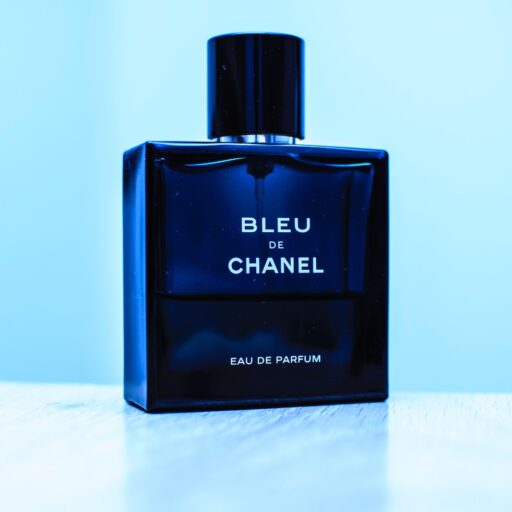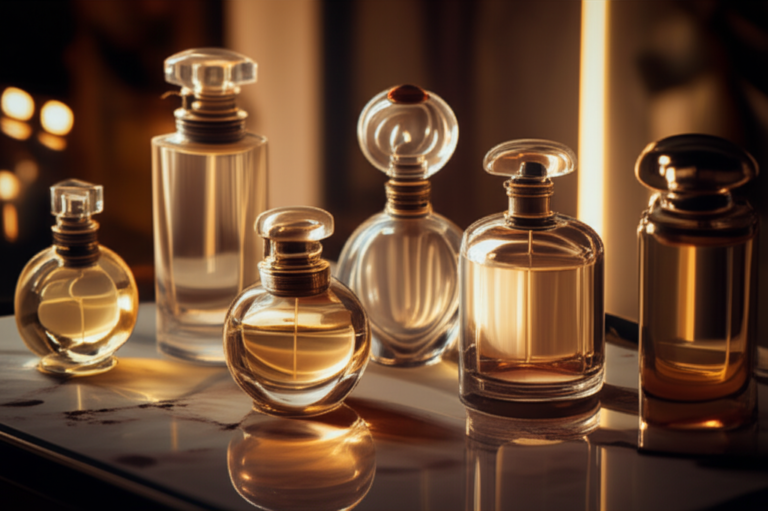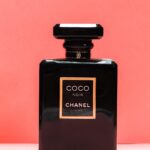Support our educational content for free when you purchase through links on our site. Learn more
How Many Different Perfumes Are There? Discover 9 Fragrance Facts! 🌸
Ever wondered just how many perfumes exist in the world? Spoiler alert: it’s way more than you might think! From ancient Egyptian concoctions to today’s cutting-edge niche blends, the universe of fragrances is vast, vibrant, and constantly expanding. In this article, we’ll unravel the mystery behind the staggering number of perfumes, explore the 7 main fragrance families, dive into niche vs. designer scents, and reveal how perfumers craft thousands of unique aromas. Ready to sniff out some secrets? Let’s embark on this scent-sational journey together!
Here’s a fun fact to get you hooked: there are over 17,000 unique fragrances cataloged worldwide — and that number keeps growing every year! But what exactly defines a perfume? How do limited editions and seasonal releases fit into the picture? And how can you find your perfect signature scent amid this aromatic jungle? We’ve got all the answers lined up for you.
Key Takeaways
- Over 17,000 unique perfumes exist globally, spanning designer, niche, limited editions, and custom blends.
- Perfumes are categorized into 7 main fragrance families: Floral, Woody, Oriental, Citrus, Leathery, Gourmand, and Fresh.
- Understanding perfume concentrations like Eau de Parfum and Eau de Toilette helps you choose scents based on longevity and intensity.
- The rise of niche perfumery and sustainable ingredients is reshaping the fragrance landscape.
- Tips for navigating the perfume jungle include trying scents on your skin, considering the occasion, and exploring both natural and synthetic ingredients.
CHECK PRICE on popular perfume categories:
- Designer Perfumes on Amazon | Walmart
- Niche Fragrances on Amazon | Etsy
- Luxury Brands Official Websites
Ready to dive deeper? Keep reading to uncover the full story behind the scents!
Table of Contents
- Quick Tips and Facts About Perfume Varieties 🌟
- The Fragrant History: How Perfume Varieties Evolved Over Time ⏳
- What Defines a Perfume? Understanding Types and Classifications 🧐
- 1. Exploring the 7 Main Perfume Families: Floral, Woody, Oriental & More 🌸🌲🔥
- 2. Niche vs. Designer Perfumes: How Many Unique Scents Are Out There? 🎨💼
- 3. Limited Editions, Seasonal Releases & Custom Blends: Counting the Rare Gems 💎✨
- 4. Global Perfume Market: How Many Brands and Fragrances Exist Worldwide? 🌍📊
- 5. The Science of Scent: How Perfumers Create Thousands of Unique Fragrances 🔬🧪
- 6. Perfume Concentrations Explained: Eau de Parfum, Eau de Toilette & More 💧💥
- 7. How to Navigate the Perfume Jungle: Tips for Choosing Your Signature Scent 🕵️♀️🌿
- 8. The Role of Ingredients: Natural vs Synthetic and Their Impact on Variety 🌱⚗️
- 9. Perfume Trends and Innovations: What’s New and What’s Next in Fragrance? 🚀🌟
- Conclusion: Wrapping Up the Scent-sational World of Perfumes 🎁🌈
- Recommended Links for Perfume Lovers 🔗
- FAQ: Your Burning Questions About Perfume Varieties Answered ❓
- Reference Links and Sources for Further Exploration 📚
Quick Tips and Facts About Perfume Varieties 🌟
As perfumers at Perfume Brands™, we’re often asked, How many different perfumes are there? 🤔 To answer this, let’s dive into the world of perfumery and explore the vast array of scents available. According to our research, there are over 17,000 known fragrances 🌎, and this number is constantly growing. You can learn more about the vast world of perfumes at How Many Fragrances Exist? Discover 17,000+ Scents!.
Understanding Perfume Concentrations
Perfume concentrations play a significant role in determining the longevity and strength of a fragrance. From Eau de Parfum to Eau de Toilette, each concentration has its unique characteristics and uses. For example, Eau de Parfum typically contains 10-20% essential oils and lasts for 8+ hours, making it a popular choice among perfume enthusiasts.
Exploring Perfume Categories
Perfumes can be categorized into various families, including Floral, Woody, and Oriental. Each family has its distinct scent profile, and understanding these categories can help you navigate the world of perfumery. You can find more information on perfume categories and families at our Perfume Guides section.
The Fragrant History: How Perfume Varieties Evolved Over Time ⏳

The history of perfumery dates back thousands of years, with ancient civilizations using fragrances for various purposes. From Egyptian perfumes to French perfumery, each culture has contributed to the evolution of perfumery. You can learn more about the history of perfumery at our Perfume History and Evolution section.
The Rise of Modern Perfumery
Modern perfumery has seen a significant rise in the number of fragrance varieties, with niche perfumes and designer perfumes offering a wide range of scents. According to Sensoriam, perfumes can be categorized by fragrance concentration, affecting longevity and price.
What Defines a Perfume? Understanding Types and Classifications 🧐
A perfume is defined by its unique blend of essential oils, aroma compounds, and other ingredients. Understanding the different types and classifications of perfumes can help you make informed choices when selecting a fragrance. You can find more information on perfume types and classifications at our Fragrance Reviews section.
Natural vs. Synthetic Perfumes
Perfumes can be made from natural ingredients or synthetic ingredients. Natural perfumes use essential oils, while synthetic perfumes use man-made aroma compounds. According to Sol de Janeiro, natural ingredients can provide a unique and complex scent profile.
1. Exploring the 7 Main Perfume Families: Floral, Woody, Oriental & More 🌸🌲🔥
The 7 main perfume families are Floral, Woody, Oriental, Citrus, Leathery, Gourmand, and Fresh. Each family has its distinct scent profile, and understanding these families can help you navigate the world of perfumery. You can find more information on perfume families at our Men’s Perfumes section.
Characteristics of Each Family
Each perfume family has its unique characteristics, from the floral notes of rose and jasmine to the woody notes of cedar and sandalwood. Understanding these characteristics can help you choose a fragrance that suits your taste.
2. Niche vs. Designer Perfumes: How Many Unique Scents Are Out There? 🎨💼
Niche perfumes and designer perfumes offer a wide range of unique scents, from exclusive fragrances to limited editions. According to Creed Fragrance, niche perfumes can provide a unique and complex scent profile.
The Rise of Niche Perfumery
Niche perfumery has seen a significant rise in recent years, with independent perfumers creating unique and exclusive fragrances. You can find more information on niche perfumery at our Luxury Brands section.
3. Limited Editions, Seasonal Releases & Custom Blends: Counting the Rare Gems 💎✨
Limited editions, seasonal releases, and custom blends offer a unique opportunity to experience rare and exclusive fragrances. According to Sensoriam, limited editions can provide a unique and complex scent profile.
The Art of Custom Blending
Custom blending involves creating a unique fragrance tailored to an individual’s taste. This process requires a deep understanding of perfume ingredients and blending techniques. You can find more information on custom blending at our Perfume Guides section.
4. Global Perfume Market: How Many Brands and Fragrances Exist Worldwide? 🌍📊
The global perfume market is a vast and diverse industry, with thousands of brands and tens of thousands of fragrances. According to Statista, the global perfume market is expected to grow significantly in the coming years.
The Rise of Online Perfume Retailers
Online perfume retailers have made it easier for consumers to access a wide range of fragrances from around the world. You can find more information on online perfume retailers at our Fragrance Reviews section.
5. The Science of Scent: How Perfumers Create Thousands of Unique Fragrances 🔬🧪
The science of scent involves a deep understanding of perfume ingredients, blending techniques, and fragrance chemistry. Perfumers use a combination of natural ingredients and synthetic ingredients to create unique and complex fragrances.
The Role of Fragrance Chemistry
Fragrance chemistry plays a crucial role in the creation of perfumes, with perfumers using a deep understanding of chemical reactions and interactions to create unique fragrances. You can find more information on fragrance chemistry at our Perfume Guides section.
6. Perfume Concentrations Explained: Eau de Parfum, Eau de Toilette & More 💧💥
Perfume concentrations refer to the amount of fragrance oil in a perfume. From Eau de Parfum to Eau de Toilette, each concentration has its unique characteristics and uses.
Characteristics of Each Concentration
Each perfume concentration has its unique characteristics, from the long-lasting Eau de Parfum to the light and refreshing Eau de Toilette. Understanding these characteristics can help you choose a fragrance that suits your taste.
7. How to Navigate the Perfume Jungle: Tips for Choosing Your Signature Scent 🕵️♀️🌿
Navigating the world of perfumery can be overwhelming, with thousands of fragrances to choose from. Here are some tips for choosing your signature scent:
- Try before you buy: Always try a fragrance before purchasing it.
- Consider your skin type: Choose a fragrance that suits your skin type.
- Think about the occasion: Choose a fragrance that suits the occasion.
You can find more information on choosing a signature scent at our Perfume Guides section.
8. The Role of Ingredients: Natural vs Synthetic and Their Impact on Variety 🌱⚗️
Perfume ingredients can be natural or synthetic, and each type has its unique characteristics and uses. Natural ingredients can provide a unique and complex scent profile, while synthetic ingredients can offer a more consistent and predictable fragrance.
The Benefits of Natural Ingredients
Natural ingredients can provide a unique and complex scent profile, and are often preferred by perfume enthusiasts. According to Sol de Janeiro, natural ingredients can provide a unique and complex scent profile.
9. Perfume Trends and Innovations: What’s New and What’s Next in Fragrance? 🚀🌟
The world of perfumery is constantly evolving, with new trends and innovations emerging all the time. From sustainable perfumery to custom blending, there are many exciting developments in the world of fragrance.
The Rise of Sustainable Perfumery
Sustainable perfumery involves using environmentally friendly ingredients and practices to create fragrances. You can find more information on sustainable perfumery at our Perfume Guides section.
If you’re interested in exploring the world of perfumery, be sure to check out our Perfume Guides section for more information and tips. You can also visit our Men’s Perfumes section to discover new and exciting fragrances.
👉 CHECK PRICE on:
Note: The links provided are for general information purposes only and may not be specific to a particular product or brand.
Conclusion: Wrapping Up the Scent-sational World of Perfumes 🎁🌈

Wow, what a fragrant journey we’ve been on! From the ancient origins of perfume to the dizzying array of over 17,000 unique fragrances available today, it’s clear that the world of scent is as vast as it is enchanting. Whether you’re a casual spritz-lover or a dedicated scent connoisseur, understanding the types of perfumes, fragrance families, and concentration levels empowers you to find your perfect signature scent.
Remember, the magic of perfume lies not just in the bottle but in how it interacts with your skin, your mood, and your personality. So don’t be afraid to experiment with niche perfumes or limited editions — those rare gems might just become your new favorites.
At Perfume Brands™, we wholeheartedly recommend exploring both designer classics like Creed’s iconic Aventus and adventurous niche scents from boutique houses. The key is to enjoy the process and let your nose lead the way. After all, your scent is your invisible signature — make it unforgettable! 🌟
Recommended Links for Perfume Lovers 🔗
Ready to dive deeper or shop some of the fragrances and brands we mentioned? Here are some curated links to get you started:
-
Creed Fragrances (Men’s Collection):
Amazon | Walmart | Creed Official Website -
Sol de Janeiro Fragrance Collection:
Amazon | Walmart | Sol de Janeiro Official -
Perfume Books for Enthusiasts:
- Perfumes: The A-Z Guide by Luca Turin & Tania Sanchez — Amazon Link
- The Art of Perfumery by G.W. Septimus Piesse — Amazon Link
- Fragrance: The Story of Perfume from Cleopatra to Chanel by Edwin T. Morris — Amazon Link
FAQ: Your Burning Questions About Perfume Varieties Answered ❓

What are the most popular perfume brands in the world?
Top global perfume brands include Chanel, Dior, Creed, Tom Ford, and Jo Malone. These brands have earned their reputation through decades of craftsmanship, iconic scents, and consistent quality. For example, Creed’s Aventus is celebrated worldwide for its versatility and longevity, making it a staple in many fragrance collections. Popularity often hinges on a brand’s ability to blend tradition with innovation, catering to diverse tastes.
Read more about “What Is the Number 1 Fragrance in the World? Top 20 Revealed (2025) 🌍”
How do I choose the right perfume for my skin type?
Your skin chemistry profoundly affects how a perfume smells and lasts. Oily skin tends to hold scents longer, so lighter concentrations like Eau de Toilette can work well. Conversely, dry skin may benefit from richer formulations such as Eau de Parfum or perfume oils, which have higher concentrations of fragrance oils and moisturizing properties. Always test perfumes on your skin and observe how the scent evolves over several hours before committing.
Read more about “What Are the Top 5 Selling Perfumes in 2025? 🌟”
What are the different types of perfumes, such as eau de parfum and eau de toilette?
Perfume types differ mainly by fragrance concentration:
- Parfum (Perfume/Extrait): 20-30% fragrance oils, lasts 12+ hours, richest and most intense.
- Eau de Parfum (EDP): 10-20% oils, lasts 8+ hours, balanced for everyday wear.
- Eau de Toilette (EDT): 5-15% oils, lasts 4-7 hours, lighter and often more affordable.
- Eau de Cologne (EDC): 2-4% oils, lasts 2-3 hours, very light and refreshing.
- Eau Fraiche: 1-3% oils, lasts around 2 hours, mostly water-based for a quick freshen-up.
Choosing depends on your preference for intensity, longevity, and occasion.
Are there any niche or luxury perfume brands that offer unique fragrances?
Absolutely! Niche brands like Le Labo, Byredo, Diptyque, and Amouage specialize in unique, often artisanal scents that stand apart from mass-market offerings. These brands experiment with rare ingredients and innovative compositions, offering limited editions and bespoke blends. Luxury houses like Creed also straddle the line between niche and designer, providing both exclusivity and heritage.
Read more about “What Are the Top 10 Men’s Perfumes to Own in 2025? 🔥”
How do limited editions and seasonal releases affect the perfume market?
Limited editions and seasonal releases create excitement and exclusivity in the perfume world. They often feature unique notes or packaging and are produced in small batches, making them collector’s items. Brands like Sol de Janeiro frequently launch seasonal scents that capture the spirit of a place or moment, enticing fans to explore new olfactory experiences.
Can synthetic ingredients be as good as natural ones in perfumes?
Yes! While natural ingredients offer complexity and authenticity, synthetic ingredients provide consistency, stability, and access to scents that don’t exist naturally (like certain musks or marine notes). Many modern perfumes blend both to achieve a balanced, long-lasting fragrance. Synthetic molecules also allow for cruelty-free and sustainable options, aligning with current eco-conscious trends.
Read more about “What Are Designer Perfumes Called? 12 Iconic Brands Explained ✨ (2025)”
Reference Links and Sources for Further Exploration 📚
- How Many Fragrances Exist? Discover 17,000+ Scents! 🌍
- Sensoriam: How to Distinguish Between Different Perfume Types
- Sol de Janeiro Fragrance Collection
- Creed Fragrances – Men’s Collection
- Statista: Global Fragrance Market Overview
- Perfume Brands™ – Perfume Guides
- Perfume Brands™ – Luxury Brands
- Perfume Brands™ – Men’s Perfumes
- Perfume Brands™ – Perfume History and Evolution
Dive into these trusted resources to deepen your fragrance knowledge and keep your scent game strong! 🌟






